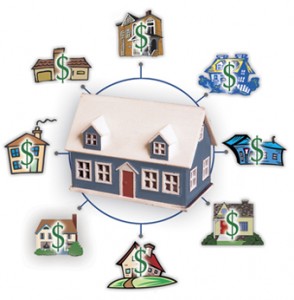
For the second straight month, the Case-Shiller unveiled data for an increasingly weak housing market.
Monthly, home values were down 1.1 percent for the 10-City Composite and 1.2 percent for the 20-City Composite, from September to October, while annually, the composites were down 3.0 percent and 3.4 percent, respectively.
Although only one of the metropolitan areas – Phoenix – had a small monthly increase, 14 of the cities did show annual improvements, though only two of the cities, Detroit and Washington DC, posted positive annual returns.
Home values in Miami, overall, were underwhelming for October. Monthly, Miami home prices declined 1.2 percent, while annually, they were down 4.0 percent, perhaps signs that Florida’s considerable foreclosure inventories are beginning to negatively impact prices.
“Chicago, Cleveland Detroit and Minneapolis all posted monthly declines of 1.0 percent or more in October,” said David M. Blitzer, the chairman of the S&P Indices index committee. “These markets were some of the strongest during the spring/summer buying season … Atlanta and the Midwest are regions that really stand out in terms of recent relative weakness.”
Blitzer said that though there was some positive news in the indices, it mainly showed a weak housing market going in to the final months of 2011 – and, like most of the good housing news today, it was restricted to the multifamily sector.
“In the October data, the only good news is some improvement in the annual rates of change in home prices, with 14 of 20 cities and both Composites seeing their annual rates of change improve,” Blitzer said. “The crisis low for the 10-City Composite was back in April 2009; whereas it was a more recent March 2011 for the 20-City Composite. The 10-City Composite is about 2.4 percent above its relative low, and the 20-City Composite is about 1.9 percent.”
“Some of the other housing statistics posted relatively healthy figures for November, but it seems that most of the good news was confined to the multi-family sector,” Blitzer said.
As of October 2011, average home prices across the U.S. are back to mid-2003 levels. Measured from their June/July 2006 peaks through October 2011, the overall declines for the 10-City Composite and 20-City Composite are -31.9 percent and -32.1 percent, respectively. The recovery from recent lows are increases of 2.4 percent and 1.9 percent, respectively. The 10-City Composite hit its crisis low in April 2009, whereas the 20-City reached a more recent low in March 2011, though the latest graphs from Calculated Risk show that when seasonally-adjusted, this latest release of data actually represents new post-bubble lows in home values.
